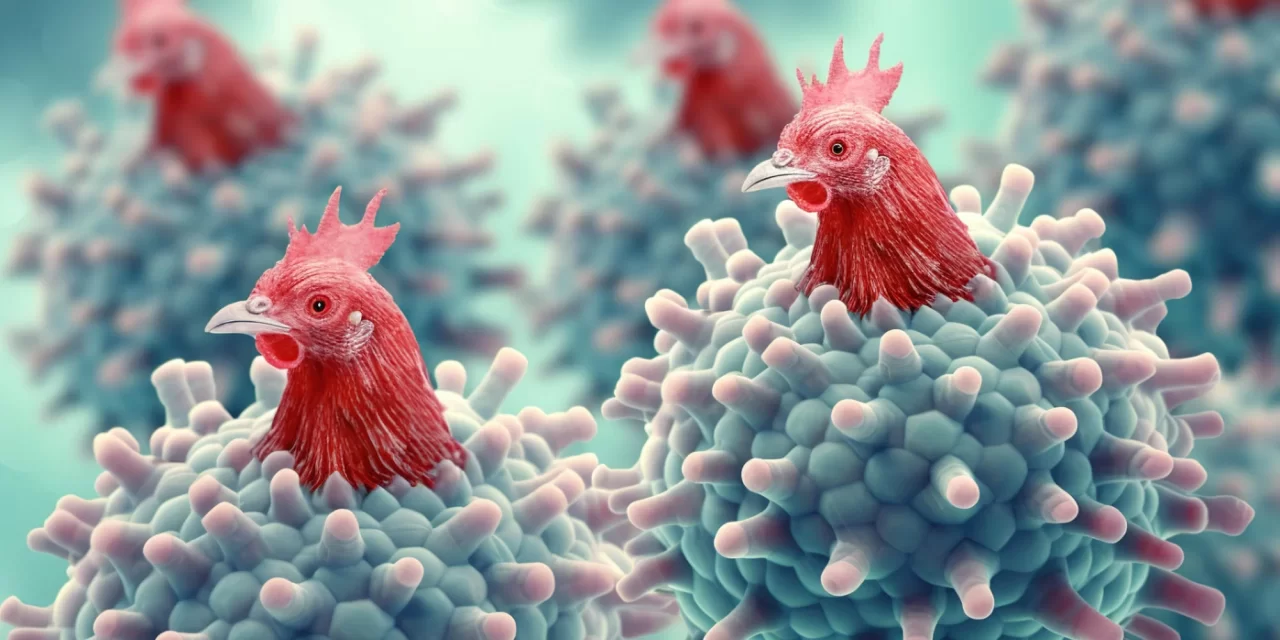As H5N1 outbreaks continue to spread globally, three leading experts are calling for urgent action to prevent a potential pandemic. In a recently published JAMA Viewpoint article, they highlight the need for a structured and well-funded response, focusing on voluntary vaccinations, enhanced vaccine stockpiles, and international cooperation.
The current H5N1 outbreak, which has affected a range of species—including poultry, cattle, wild birds, and mammals—has already resulted in at least 13 human infections, mainly on poultry and dairy farms in North America. While no human-to-human transmission has been documented, experts warn of the looming pandemic threat.
“It is highly concerning that this H5N1 strain has spread more widely among mammals compared to previous ones,” said Dr. Jesse Goodman, a professor at Georgetown University and former FDA Chief Scientist. “Though human cases have been mild so far, the virus’s persistent presence and potential to mutate pose a real pandemic risk.”
Alongside Dr. Goodman, Dr. Rick A. Bright and Dr. Nicole Lurie co-authored the article, advocating for decisive global efforts to mitigate both current and future risks. Their comprehensive strategy emphasizes three key areas of focus: short-term protection, medium-term vaccine readiness, and long-term preparedness for future influenza pandemics.
Immediate Steps: Voluntary Vaccination for At-Risk Individuals
In the short term, the U.S. government is preparing 4.8 million doses of stockpiled H5N8 vaccine, which may offer cross-protection against the H5N1 strain. Goodman and his colleagues urge that, pending regulatory approval, these vaccines should be offered voluntarily to individuals at high risk of exposure, such as farm workers who are in close contact with infected animals.
Medium-Term Focus: Refreshing Vaccine Stockpiles and Expanding Capacity
Looking further ahead, the experts stress the importance of refreshing vaccine stockpiles with doses tailored to the circulating H5N1 strain. Their goal is to ensure that at least 20 million people, especially critical workforce members, can be rapidly immunized in the event of a pandemic.
To achieve this, they advocate for steps to enhance global vaccine production capacity, including exploring the potential of mRNA vaccines for pandemic influenza. These vaccines, which have proven effective during the COVID-19 pandemic, offer faster and more scalable manufacturing options.
Long-Term Preparedness: Pre-Pandemic Immunization Strategies
In the long term, the authors propose exploring pre-pandemic immunization strategies. This would involve vaccinating high-risk groups during non-pandemic periods to build population immunity against potential future pandemic strains, a strategy that, while not yet proven, could reduce the impact of future outbreaks.
The authors emphasize the importance of a comprehensive global response that integrates pandemic vaccines, diagnostics, therapies, and non-pharmaceutical interventions. They call on governments, global partners, and private sector stakeholders to unite in addressing pandemic threats.
Call for Global Cooperation
The experts stress that now is the time for decisive action. “The time for decisive action is not when a pandemic strikes, but today, while we have the opportunity,” they conclude.
As the threat of H5N1 looms, the call for global collaboration and proactive measures echoes across the scientific and public health communities. With proper preparation, experts believe that the world can prevent another pandemic.
Reference: “H5 Influenza Vaccines—Moving Forward Against Pandemic Threats” by Jesse L. Goodman, Rick A. Bright, and Nicole Lurie, JAMA, September 4, 2024. DOI: 10.1001/jama.2024.17488.











